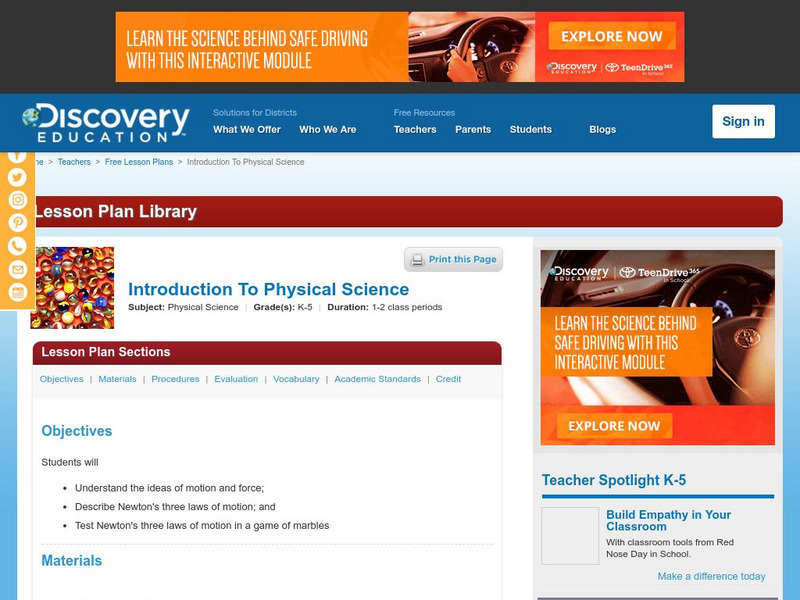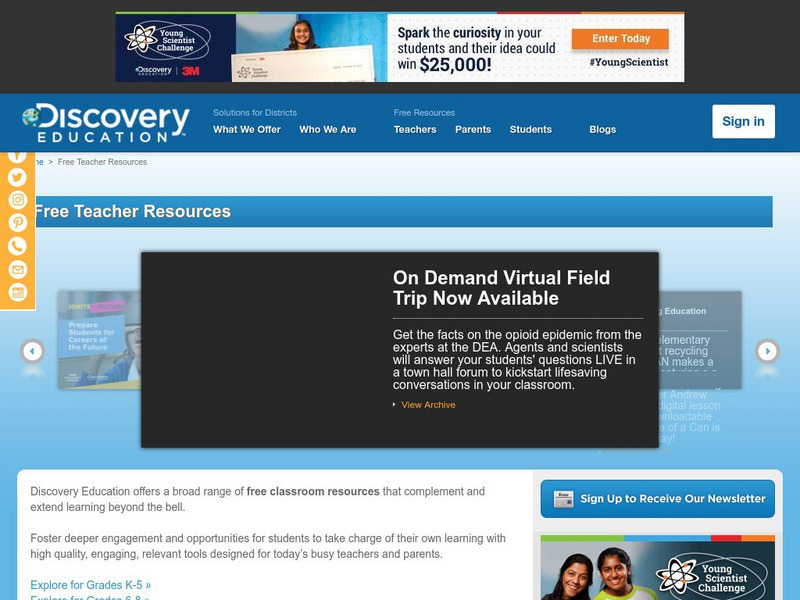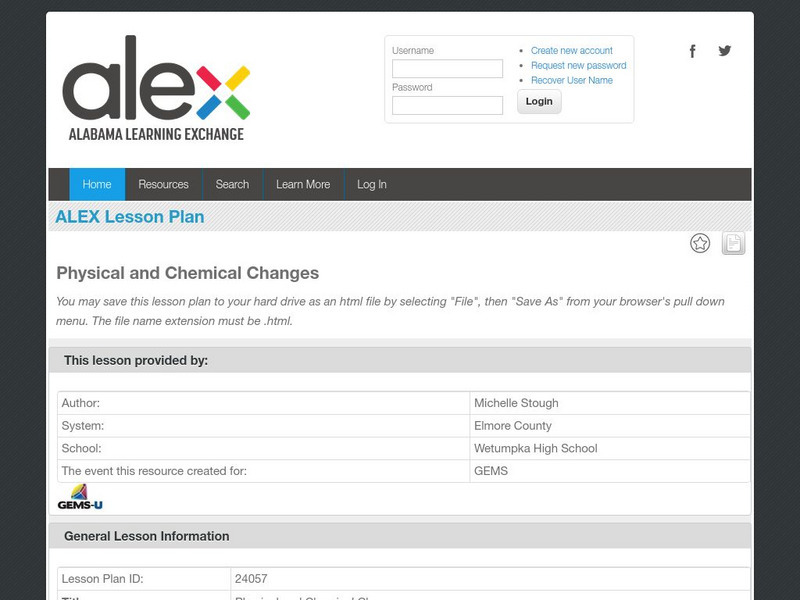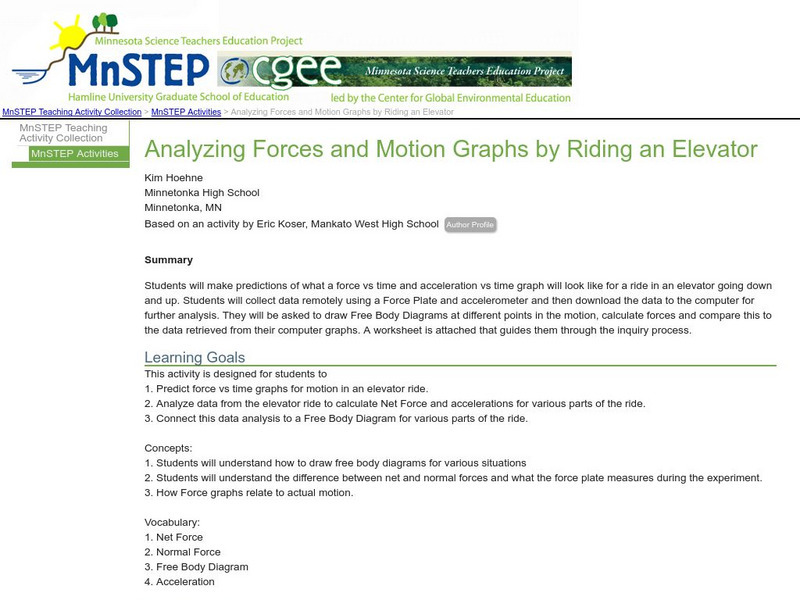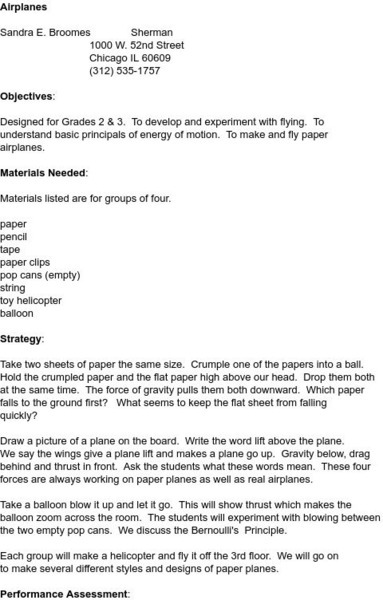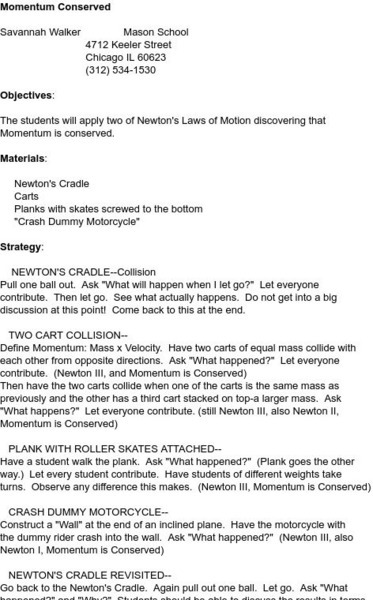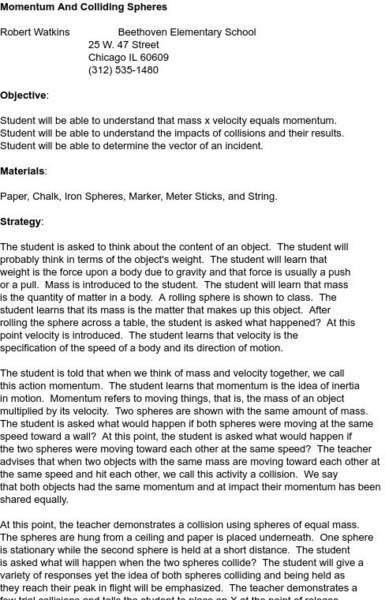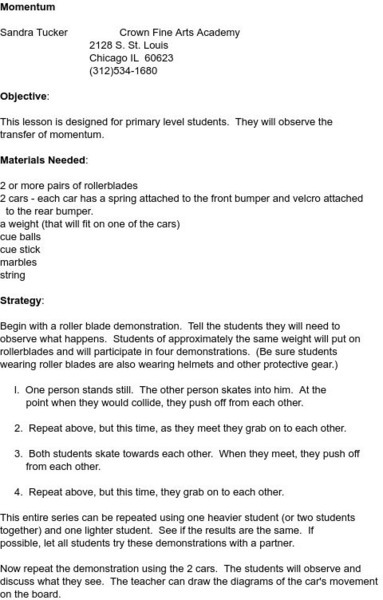Curated OER
Writing Directions for Mathematical Activities
Fifth graders reorganize comic strips to have them make sense, complete outline and organize their thoughts into outline form to explain directions,
and use that outline to complete their own directions for geometry activities.
University of Florida
Florida Museum of Natural History: Physical Science
This guide focuses on four physical science topics that fascinate children and scientists alike. They are motion, magnets, sound, and light. With your guidance and support, these topics provide children with many opportunities to explore...
Discovery Education
Discovery Education: Introduction to Physical Science
Introduce students to the ideas of motion and force in this hands-on lesson plan.
Discovery Education
Discovery Education: Physical Science: Gravity Gets You Down
In this lesson, students make predictions about falling objects of different sizes and masses to learn about gravity and air resistance. Includes audio vocabulary list and extension activities.
Discovery Education
Discovery Education: Physical Science
The Discovery Channel provides numerous lesson plans dealing with the physical sciences. Content is organized by grade level, but all lesson plans include suggestions for adaptations for older or younger audiences.
Science Education Resource Center at Carleton College
Serc: Investigating Projectile Motion: Creating a Catapult
This instructional activity is for 9th grade physical science students. It begins with an inquiry-based instructional activity using a projectile motion computer simulation. It culminates with students building a catapult; applying and...
TeachEngineering
Teach Engineering: The Science of Swinging
Students learn what a pendulum is and how it works in the context of amusement park rides. While exploring the physics of pendulums, they are also introduced to Newton's first law of motion - about continuous motion and inertia.
PBS
Pbs Learning Media: The Ruff Ruffman Show: Teacher's Guide: Sports Science
Learn about sports science and force and motion alongside Ruff Ruffman.
PBS
Pbs Learning Media: Kids in Motion: Water Cycle Fitness Lesson Plan
In this lesson, students unite science and physical activity to learn about the water cycle!
Alabama Learning Exchange
Alex: Force and Motion
In this activity, the students will work across the curriculum using technology, business education, and mathematics. They will form a company and use the physics of force and motion to build a hovercraft. The students will use this...
Alabama Learning Exchange
Alex: Physical and Chemical Changes
The teacher will conduct the whoosh bottle demonstration to engage students. The class will then begin discussion of endothermic and exothermic physical and chemical changes. The students will then conduct the Science in Motion lab...
Science Education Resource Center at Carleton College
Serc: Analyzing Forces and Motion Graphs by Riding an Elevator
A high school physics lab on classical mechanics in which students study force versus time and acceleration versus time. Students need access to an elevator to complete the experiments. A lab handout is provided.
PBS
Pbs Learning Media: Kids in Motion: Weather Fitness Lesson Plan
In this lesson, students "rediscover" weather as they use movement to act it out. Using their whole body to bend, stretch and exercise, students follow along as the teacher calls out and moves different types of weather.
Science and Mathematics Initiative for Learning Enhancement (SMILE)
Smile: Newton's Laws of Motion
Lesson plan from the Illinois Institute of Technology that incorporates many demonstrations like pulling a tablecloth from under a place setting, or launching a rocket to show Newton's laws.
Science and Mathematics Initiative for Learning Enhancement (SMILE)
Smile: Airplanes (2 3)
This paper airplane lesson plan helps students learn about certain concepts like air resistance, motion, and aerodynamics.
Science and Mathematics Initiative for Learning Enhancement (SMILE)
Smile: Projectiles
Lesson plan in which students will observe demonstrations and interact with various objects dealing with projectile motion. Subject matter for intermediate or middle school.
PBS
Pbs Learning Media: The Ruff Ruffman Show: Teacher's Guide: Structures
Learn about structures alongside Ruff Ruffman.
Science and Mathematics Initiative for Learning Enhancement (SMILE)
Smile: Momentum Conserved
This site by the Illinois Institute of Technology gives a Lab activity in which students use a variety of toys to discover Newton's second law and momentum conservation. Newton's cradle, skate boards, and a toy motorcycle are incoporated...
Science and Mathematics Initiative for Learning Enhancement (SMILE)
Smile: Colliding Spheres
This lab activity from the Illinois Institute of Technology lets students investigate the impact of collisions upon the velocity and momentum of the colliding objects. Requires understanding of vectors.
Science and Mathematics Initiative for Learning Enhancement (SMILE)
Smile: Objects Race
In this lesson plan grab a slope and different objects. Roll the objects down the slope and record which is the fastest. Students analyze the features of the objects that make them slow or fast.
Science and Mathematics Initiative for Learning Enhancement (SMILE)
Smile: Transfer of Momentum
This lesson designed for primary level students, describes the bodily-kinesthetic method of showing the conservation of momentum with students rollerblading, using cars, and colliding marbles.


